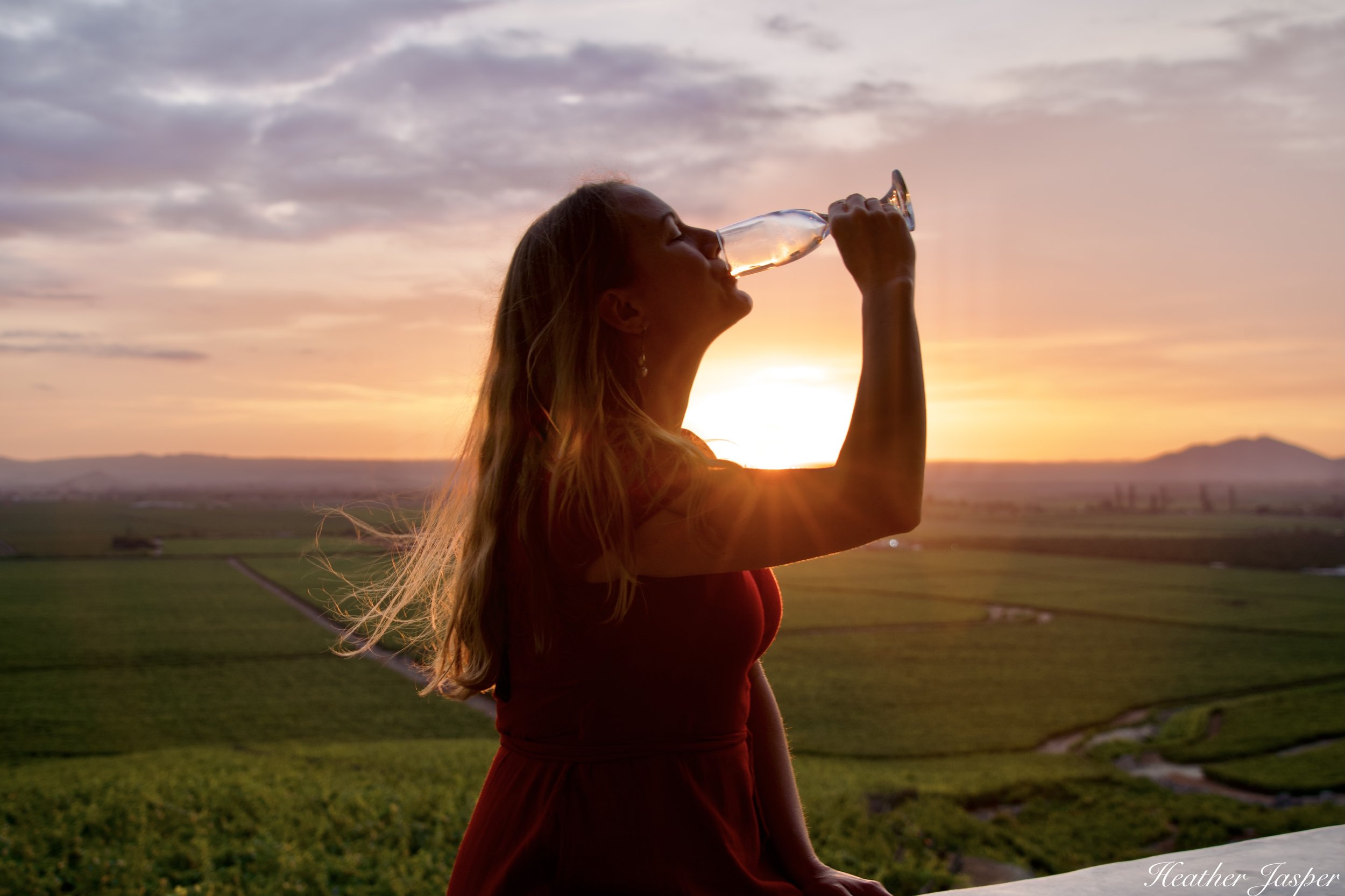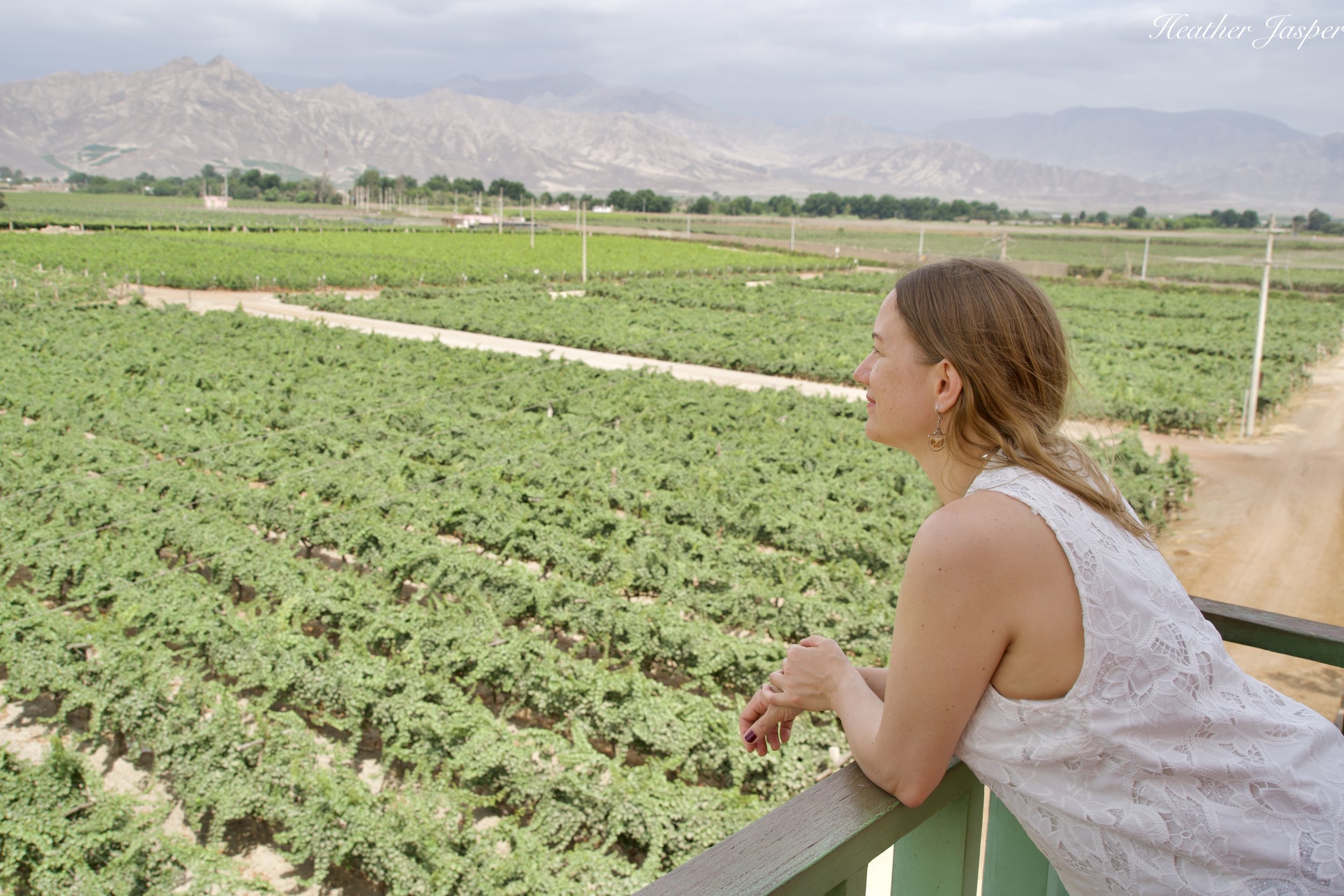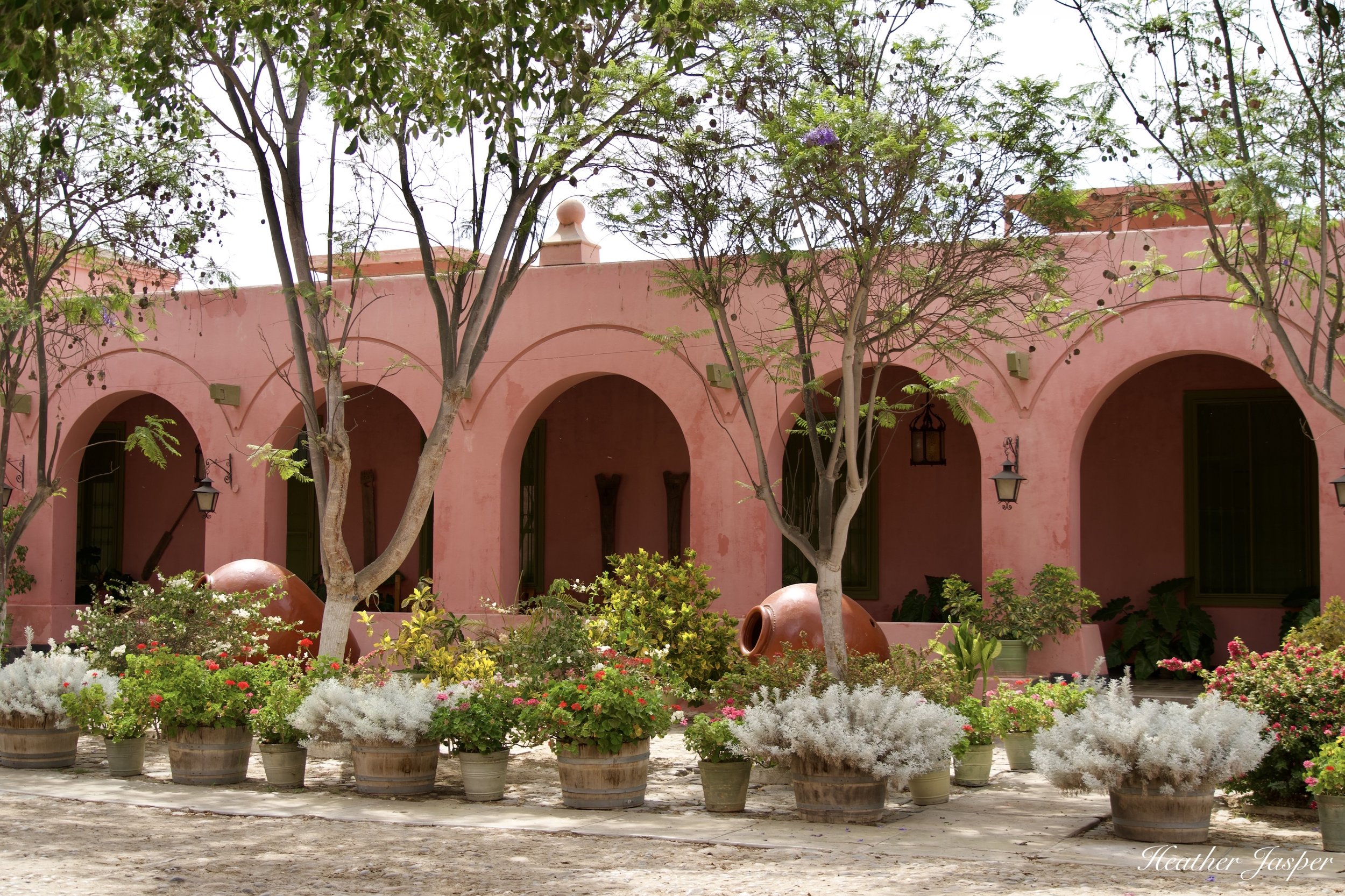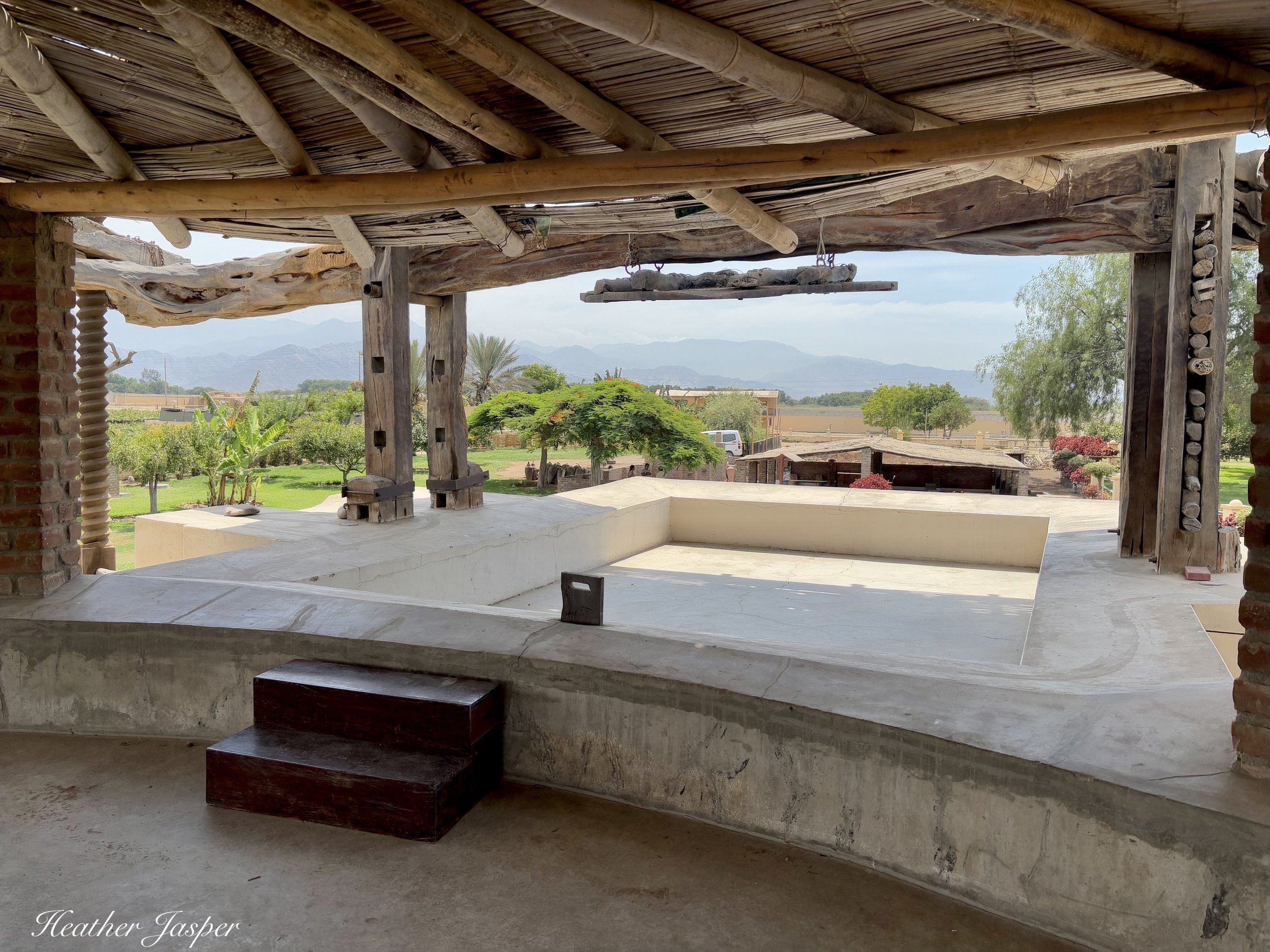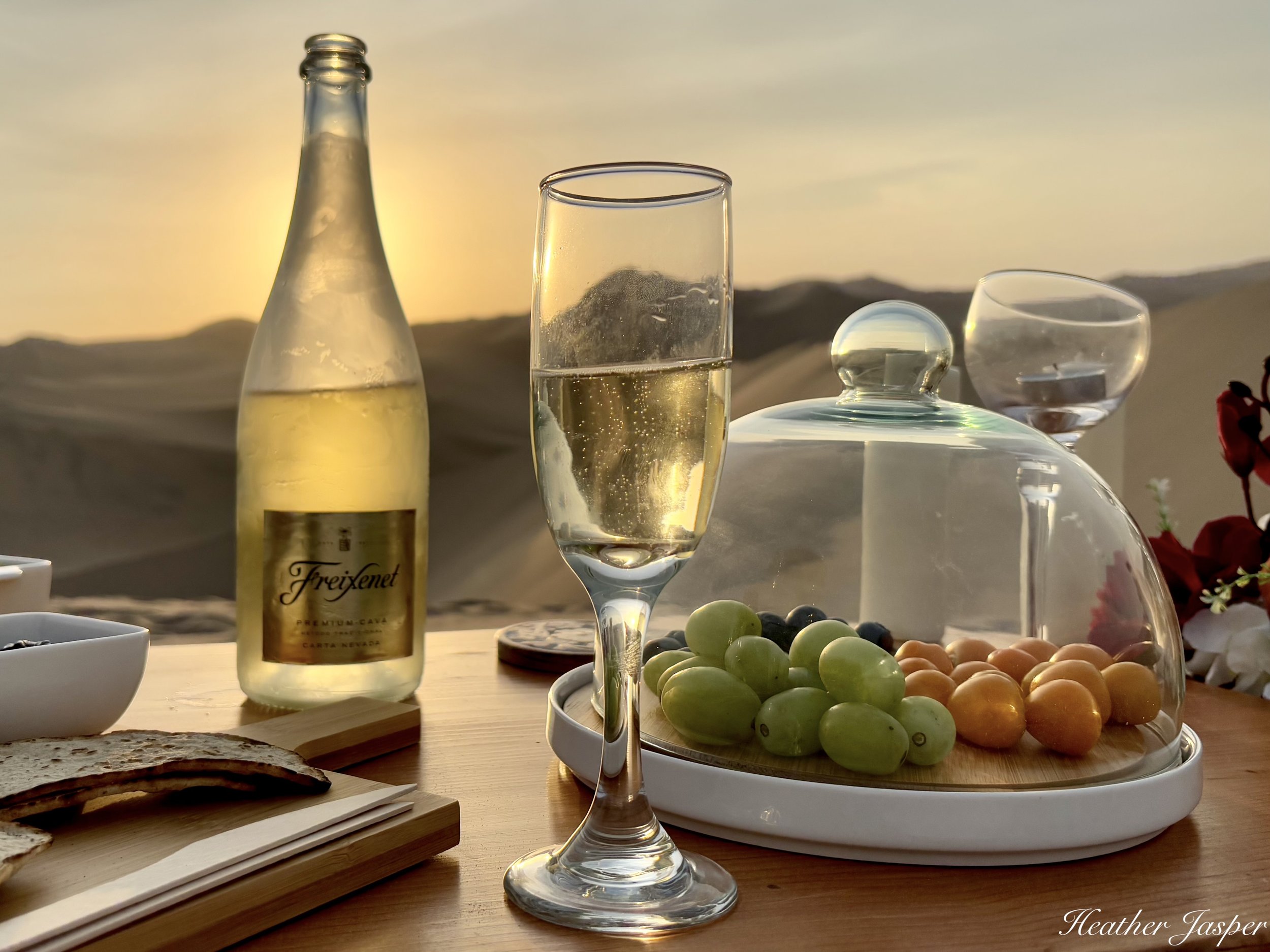Wine & Pisco in Ica, Peru
Want to go wine tasting where it never rains and the sunsets are always perfect? Go to Ica!
Ica’s Wineries & Distilleries
Ica, Peru has some fantastic wineries and pisco distilleries!
Check out Peru’s Land of Wine & Pisco, published by Smart Luxury.
There are over 300 grape growers in Ica to supply over a hundred wineries and almost as many pisco distilleries. Like wine, the only ingredient in pisco is fermented grape juice. The biggest difference is that for wine the fermented grape juice is aged in barrels, usually of French oak, while for pisco the fermented grape juice is distilled and aged in stainless steel vats or some other neutral material that doesn’t affect the flavor of the pisco.
Peruvian wine and pisco used to be aged in ceramic vessels, which you’ll see all over every winery and distillery in Ica.
During my week in Ica, not only did I get to stay at a winery (Hotel Viñas Queirolo) but I also got to tour one of the best wineries, Tacama, and one of the best pisco distilleries, Caravedo. I am a total lightweight, so even though I was only drinking a sip of each wine or pisco, I was thankful to have a guide and driver from Destinos Ica.
Ica is a desert and the perfect place for growing grapes.
Ica is even sunnier than Napa, California and has even sandier soil than the Rhône Valley, France. It rains less than an inch per year and vineyards are watered through drip hoses with water drawn from aquifers.
The Ica Valley is always sunny, even when clouds form on the distant Andes Mountains.
Peru isn’t famous for wine – yet.
In South America, Argentina and Chile steal the spotlight for wine exported to North America and Europe. In 2024, Chile exported 643 million liters between January and October and Argentina exported 90 million liters in the same time period. I couldn’t find statistics for 2024, but in 2022 Peru exported 526 million liters. The biggest buyers are the US, France, Japan, the UK, and Spain. So, next time you go buy wine, look for a Peruvian vineyard and give it a try. Queirolo and Tacama are two of the biggest exporters and I highly recommend giving them a try.
Tambo de Tacama Winery
My tour of Tacama started with a view of the vineyards from an 1800s belltower that still has the original, massive, brass bell. The vineyards stretch for miles, up to the foothills of the Andes in the distance. In January, bunches of grapes weigh down the vines, though they have another month or two to ripen before the harvest.
January through March are the best times to visit if you want to see the grapes at their fullest, or to watch the harvest in March. Vines are cut back in May, so the fields are bare during winter, from June through August. In September you can see new leaves and in October you can see the vineyards in bloom.
The next part of the tour showed us some of the equipment used to process grapes when the winery was opened in the 1540s. Tacama is the oldest vineyard in South America, though the equipment and process were completely overhauled in the 1800s and again in 2008. There is a tasting area next to the equipment, designed for large groups. I was thankful that my tasting was held in a laboratory-like room, with low light and air conditioning. Though the science room feel was odd, I quickly realized that the backlit white tables were carefully designed for optimal observation of the wine’s color and texture.
Due to the climate and sandy soil, the grapes that grow well in Ica are similar to the ones that grow in the Rhône Valley, where I was an exchange student 25 years ago. My time in France shaped my palate and wines that bring me back to the Rhône will always be my favorites. So, you won’t be surprised that I loved Tacama’s wines, especially their Tannat and Petit Verdot reds. The white I tasted was 20% Sauvignon Blanc and 80% Viognier. My host mother’s favorite white wine was Viognier, so the smell immediately transported me back to France, even before I tasted it.
Wine & cheese
The wine tasting at Tacama was accompanied by a cheese board.
Wine tasting at Tacama is accompanied by goat cheese, gruyere and a smoked cheese with the nuts and dried fruit. For each wine, the sommelier directed me to examine the wine’s color and texture with the table’s back lighting, smell it, then taste it. Next, he told me which cheese or other item to eat before tasting the same wine again. I’ve done this at many wineries and am always delighted how well food can bring out flavors I hadn’t already noticed in the wine.
After the wine tasting, I had lunch at Tacama, which has an excellent restaurant on site. I’m sure the server would have recommended the perfect wine to go with my meal, but I needed a break from wine, especially since my next stop was a pisco distillery.
This is the original grape press from the late 17th century.
Hacienda La Caravedo Distillery
Like Tacama, at Caravedo I first got a tour of the distillery and vineyards before the tasting. Before we set out on the walking tour, I was given a cold can of chilcano (a popular pisco cocktail) to enjoy while we strolled around in the scorching heat. January is summer in Peru and the sun was brutal, which apparently the grapes love. I wilt quickly in the heat, and I don’t like pisco, so I was only doing this tour because I think anybody who calls themselves an expert on Peru should know something about pisco. If that’s the bar, then I’m now going to call myself an expert on Peru.
The first part of the Caravedo tour was a shady walk under a trellis covered with the eight varieties of grape (uva in Spanish) that they use for their pisco. Next, we walked up into the grape press that was used when Caravedo started distilling pisco in 1684. Spanish colonists brought enslaved Africans with them and many worked at vineyards like Caravedo until 1854, when slavery was finally outlawed and the Peruvian government bought the freedom of every enslaved person.
Hacienda la Caravedo is the oldest distillery in Peru, started when the Spanish crown prohibited importing wine from Peru to Spain. Apparently, the Peruvian wine was so much better that wineries in Spain complained of unfair competition. With the export market gone, vineyards in Peru started to distill their fermented grape juice, rather than age it for wine.
The modern distillery has a view of the original 1684 grape press outside.
After the tour, I was relieved to be in the air conditioned tasting room, though nervous about how well I would hold up with the effects of such a strong liquor. I was served an even larger cheeseboard than the one at Tacama, which definitely helped.
I tasted six piscos, each time following the sommelier’s instructions to breathe in, then hold my breath while I tasted the pisco, swallow and then breathe out. That’s supposed to help you focus on the taste and feel the effects of the alcohol less. Combined with the cheese board and small quantities of each pisco, it helped me not feel drunk at all. However, looking back at the photos, it appears I was leaning on the counter and later on a Rolls Royce, perhaps trying to stay upright.
Still standing
I had only a sip of each pisco, but I was still proud to be standing after that.
Caravedo’s Rolls Royce
Even if you don’t stay at Hacienda la Caravedo, take some time to enjoy the property, and their 1934 Rolls Royce.
If you’re a fan of pisco, or just a fan of tastings, Caravedo has one of the best tours and tasting experiences in Peru. Also, the hacienda has rooms and bungalows if you want to stay near the vineyards, or if you don’t want to get in a vehicle after tasting pisco.
Hacienda San José in Chincha
My tour of Hacienda San José in Chincha included a signature pisco cocktail, which was much too strong for me.
Sunset in Huacachina
My sunset picnic in the sand dunes near Huacachina included a bottle of local sparkling wine from Ica. Read my full Huacachina blog here.
Viñas Queirolo, which makes both the Queirolo and Intipalka wine labels, also has a lovely hotel, which you can ready about on my Queirolo blog.
Many thanks to photographer Óscar Paz Campuzano for his assistance with photos at both Tacama and Caravedo!

